
NGS’ NG/LNG SNAPSHOT – APRIL 2019, VOLUME I
National News Internatonal News
NATIONAL
|
City Gas Distribution & Auto LPG Natural Gas / Pipelines / Company News Policy Matters/Gas Pricing/Others
|
SNAPSHOT: NATIONAL
 Electric Mobility
Electric Mobility
Hyundai and Kia invest Rs2,059 crore in EV initiative with Ola India
Both the companies are reaching out to Ola to increase the sales of their EVs. Personal vehicle option is available or not is yet to be decided. Last year in August, the Hyundai had led Rs 100 Crore funding round in the car rental startup Revv.
read more
The South Korean companies will also work with Ola to make new mobility solutions using e-cars. The three companies, Hyundai, Kia, and Old will be collaborating to develop India particularly EVs and the required infrastructure. Chairman of Hyundai Motor Group says “India is the centerpiece of Hyundai Motor Group’s strategy to gain leadership in the global mobility market and our partnership with Ola will certainly accelerate our efforts to transform into a Smart Mobility Solutions Provider,” said Euisun Chung, Executive Vice Chairman of Hyundai Motor Group. “Hyundai will proactively respond to market changes and persistently innovate to deliver greater value to our customers,” he added.
“This partnership will also significantly benefit driver-partners on our platform, as we collaborate with Hyundai to build vehicles and solutions that enable sustainable earnings for millions of them, in the time to come.”.
Source: ElectricVehicles.in
show less
EV components-India depends on China imports
The Government’s aims for the electrification of vehicles up to 30% by 2030, it is taking all the necessary steps to promote eco-friendly vehicles in the country. India in the financial year 2018 have received the components from Chinese around $4.3 billion up to 27%.
read more
The automotive industry executives said that it seems not to slow down in the future. India’s import numbers are much high to more than ten times from China than the export. The increasing of imports of auto components from China will risk the local auto component manufacturing ecosystem which leads to a large trade deficit with China in a couple of years. The exports from China includes mainly the electronic components of vehicles which are used for the manufacturing of EVs.
Source: electricVehicles.in
show less
Electric rickshaw market segmentation
 The market is growing rapidly from the past few years with the government’s push and encouragement now it is also providing incentives to encourage the three-wheeler consumers to buy an electric one.
The market is growing rapidly from the past few years with the government’s push and encouragement now it is also providing incentives to encourage the three-wheeler consumers to buy an electric one.
read more
Adoption of electric vehicles not only controls the air and sound pollution but also it saves the money that you waste to buy expensive, high priced fuels-petrol or diesel. In India, there are two e-rickshaw vehicle types or categories like passenger carrier and a load carrier of these, the passenger carrier-dominated the market in 2018 by over 95.0% revenue share and is expected to have the same hold in the future too. The reason behind the domination could be the needs for public transportation, low-cost shared mobility demand and we should not forget about the rising population in the country. The e-rickshaws with 1,000–1,500 W motor power holds the largest share in the market as it gives the benefits in terms of operational low costs. And also the 1000W and 1800W motors are used in the E Rickshaws and E-carts. Previously the battery capacity 101 Ah led e-rickshaws were in the market but now currently the SLA battery type is most preferred one as these batteries are cheaper than the Li-ion. Manufacturers are looking out for the use of Li-ion batteries as SLA batteries are harmful when they are not disposed of properly. Currently, e-rickshaws using lead-acids batteries and some manufacturers also using Li-ion batteries which are said to be the best quality battery used in an electric vehicle. The e-rickshaws market is dominated by the small, unorganized and the major players include Terra Motors Corporation, Lohia Auto Industries, Hero Electric Vehicles Pvt. Ltd., Saera Electric Auto Pvt. Ltd., and Clean Motion India.
Source: evehicles.in
show less
Tata Motors EVs with their incentives provided by the Government
The main objective of the FAME scheme is to encourage faster adoption of electric and hybrid vehicles by way of offering an upfront incentive on a purchase of electric vehicles,” said the government in a statement.
read more
As per FAME India, as of 16th March 2019, the number of vehicles sold were 266999.
Tata Motors is one of the most popular and leading companies for the adoption of electric vehicles in India. Tata Tigor EV, Tata Tigor EV-XM, Tata Tigor EV- XE, Tata Tigor EV-XT are the Tata Motor’s Four Wheeler electric vehicles. Tata Motors’s contributions towards EVs:
Tata Motors Supplied 40 Electric Buses To Lucknow City. Tender To supply 255 Electric Buses to 6 public transport undertakings. 2,700 Fast Charging Stations Installation In India By Tata. Supply of 10,000 electric cars to EESL (Energy Efficiency Services Ltd). Supply Of 80 electric buses to West Bengal Transport Corporation
Supply of 40 units of the Ultra 9m AC electric buses to Atal Indore City Transport Service Limited
Source: electricVehicles.in
show less
SNAPSHOT: NATIONAL
 Natural Gas / Pipelines/ Company News
Natural Gas / Pipelines/ Company News
Brookfield-led InVIT to buy RIL’s East-West gas pipeline for Rs 13,000 cr
Canadian investor Brookfield-led India Infrastructure Trust (InVIT) has agreed to buy billionaire Mukesh Ambani’s loss-making East-West gas pipeline for Rs 13,000 crore.
read more
The InVIT will acquire 100% equity interest in Pipeline Infrastructure Pvt Ltd, owner and operators of the pipeline that transports Reliance Industries Ltd’s eastern offshore KG-D6 gas to customers, according to a statement issued by Ambani’s flagship company. After this, the existing pipeline usage agreement has been reworked to reduce capacity reserved for RIL gas to 33 MMSCMD from 56 MMSCMD currently. RIL will have to transport at least 22 MMSCMD of gas through the pipeline at the revised tariff, failing which it will be liable to pay the differential amount to Pipeline Infrastructure, the statement said. The East West pipeline originates at Kakinada in Andhra Pradesh and travels 1,460-kilometre up to Bharuch in Gujarat. It commenced operations in 2009 with an original design capacity to transport 85 MMCSMD of gas, including 21.25 MMSCMD on common carrier basis. The pipeline primarily transports KG-D6 gas, which has steadily dipped from 69.43 MMSCMD achieved in March 2010 to under 3 MMSCMD. RIL and its partner BP are investing USD 4-5 billion in developing three sets of gas fields in the flagging KG-D6 block. The three sets of discoveries are envisaged to produce 22-25 MMSCMD of gas. Also, the pipeline is seen as a natural vehicle for transporting gas to be imported in liquefied form (LNG) on terminals planned on the east coast. The pipeline is connected to pipelines of operators such as GAIL (India) Ltd and Gujarat State Petronet Ltd. In the statement, the company said the amount payable for any unutilised capacity by RIL will be the difference between Rs 500 crore per quarter and the actual revenue earned by Pipeline Infrastructure. “RIL will continue to be entitled to transport gas, either by itself or of any customers, free of cost against any outstanding unutilised capacity payments,” it said. “At the current approved final tariff of Rs 71.66 per MMBtu, if the average volume of gas transported is 22 MMSCMD, RIL will not be liable to make unutilised capacity payments,” it added. PNGRB had on March 12, approved a 37 per cent rise in tariff from April 1, for the pipeline to Rs 71.66 per million British thermal unit on a gross calorific value basis. The next review of tariff in April 2020, will also consider upward revision to tariff arising from the determination of the lower revised capacity of the pipeline, the statement said.RIL’s current investment in preference shares valued at Rs 4,000 crore will continue and will be converted into equity at the end of 20 years. Further, at the end of 20 years, RIL has the right to acquire equity shares of PIPL held by the InvIT at an equity value of Rs 50 crore.
show less
GAIL (India) Limited to equip gas turbines with Siemens Remote Diagnostic Services
 Real-time data analysis from 29 gas turbines across multiple locations will increase availability, reduce forced outages and enable proactive, prescriptive maintenance Digitalization to improve availability, efficiency, productivity and flexibility
Real-time data analysis from 29 gas turbines across multiple locations will increase availability, reduce forced outages and enable proactive, prescriptive maintenance Digitalization to improve availability, efficiency, productivity and flexibility
read more
Siemens will install state-of-the-art Remote Diagnostic Services (RDS) for GAIL (India) Limited covering 29 gas turbines operating across the Hazira-Vijaipur-Jagdishpur (HVJ) pipeline and the Vijaipur C2/C3 Plant. The scope includes the supply of RDS hardware, site installation and commissioning including remote Operational Service Desk (OSD) and helpdesk services. The OSD will be accessible 24/7, equipped with machine learning tools and manned by technical experts to provide faster, high quality troubleshooting and guidance for problem resolution. GAIL is the largest state-owned gas transmission and distribution company in India and plays a pivotal role in meeting the energy needs of the country. Prashant Jain, Head of Power Generation Services, Siemens Limited in India, said, “Reliable and efficient operations, especially of critical assets, are key to a profitable and sustainable business for gas transmission utilities. Siemens has experience monitoring over 1000 Oil & Gas and industrial rotating equipment across 80 countries using RDS. We take great pride in partnering with GAIL in their quest for enhancing availability, reliability and efficiency.” Siemens Remote Diagnostics Services enables detailed analysis of actual power plant conditions as well as recommendations for improvements. Siemens’ RDS solution, part of the Omnivise Digital Services portfolio, combines asset data with OEM industry expertise to deliver information that allows faster and accurate predictive analysis for effective decisions. This enables improved operational planning to increase availability, mitigate risks and optimize operational costs. It comprises a suite of tools and processes that enables Siemens to remotely access and review “real-time” operational and diagnostics data from installed equipment, detect early changes in operational condition through data analysis and provide recommendations.
show less
GSPC to sell 12 of its 21 hydrocarbon blocks to pare debt
State-run Gujarat State Petroleum Corp. Ltd (GSPC) has put 12 of its 21 hydrocarbon blocks on the block to reduce its debt, according to two people aware of the development. GSPC is the flagship firm of the GSPC Group,
read more
which is involved in exploration and production of oil and gas. The Gujarat government owns 87% in GSPC. “GSPC has opened its data room to bidders. It is selling 12 of its 21 hydrocarbon blocks,” said one of the two persons mentioned above on condition of anonymity. The company had hired consulting firm EY in 2016 to prepare a report on the stake sale, in an attempt to reduce its debt, which has reached ₹20,000 crore as of March 2016. GSPC holds a participating interest in 21 hydrocarbon blocks, both onshore and offshore, according to the company’s website. Five of the blocks put on sale are operated by the state-run Oil and Natural Gas Corp. Ltd (ONGC), three by Gujarat Natural Resources Ltd, two by GSPC, and one each by Sun Oil and Natural Gas, and Oilex Ltd.As part of its debt reduction plan, in 2016, it sold its entire 80% interest in Deen Dayal West gas field in the Krishna Godavari Basin (Block KG-OSN-2001/3), for ₹7,738 crore to ONGC. Last March, GSPC also sold 28.4% stake in Gujarat Gas Ltd, its city gas distribution business, to its subsidiary Gujarat State Petronet Ltd. Proceeds from both sales were used to retire part of its debt. Till last August, GSPC had a reported debt of nearly ₹13,000 crore. GSPC had hired State Bank of India to advise it on debt management.
show less
Fire following leak in GAIL pipeline
Panic gripped the residents of Parappana Agrahara after an accidental fire broke out following a leak in a GAIL (Gas Authority of India Ltd.) pipeline. The incident occurred at about 7 p.m. at AECS Layout.
read more
There were no casualties or injuries, as the fire broke out in an open area in the locality. Two fire tenders rushed to the spot to douse the blaze. It took more than an hour to bring the fire under control, according to sources in the Fire and Emergency Services. Sources said around 7 p.m., the residents noticed the fire and raised an alarm. Prashanth, a labourer at a construction site in the locality, alerted the fire control. The police said the Fire and Emergency Services personnel, along with a team from GAIL, were investigating the cause of the gas leak, while an official from Fire and Emergency Services claimed there were three to four leaks in the same pipeline. According to senior officials in GAIL, the pipeline was exposed, following some drain work that was taken up nearby. The official said some rag pickers, on Sunday evening, set fire to some waste. “Due to the heat from the fire, the pipeline got damaged and there was a leak, which caught fire. Soon after we heard of the fire and leak, we closed the valves,” the official said and added that repairs on the pipeline had been completed. GAIL would take up an investigation into the incident as well. Over the past six months, GAIL’s city pipeline network has been damaged at least five times by various agencies or private companies while digging roads. The pipelines are laid one metre below the ground. In February, four children were injured and at least five houses as well as vehicles were damaged following a blast on a site where workers from Bengaluru Electricity Supply Company (Bescom) had allegedly taken up work next to a GAIL pipeline at Muneshwara Layout. An FIR was registered against GAIL and Bescom. In January, a compound wall and a section of a house caught fire when a group of contract labourers of Bescom allegedly damaged a GAIL pipeline while laying HT cables at AECS Layout in Singasandra. And, in October last, the contractors of Bangalore Metro Rail Corporation Ltd. had twice damaged pipelines in Whitefield.
show less
SNAPSHOT: NATIONAL
 Policy Matters/Gas Pricing/Others
Policy Matters/Gas Pricing/Others
India raises natural gas price for April-September by about 10 per cent
India has also set the ceiling price for gas to be produced from difficult fields at $9.32 per MMBtu for April-September, up about 21.5 percent from $7.67 per MMBtu in the previous six months.
read more
India has raised the price of its locally produced gas by about 10 percent to $3.69 per MMBtu for the April-September period, compared with the previous six months, a source aware of the development said. India has also set the ceiling price for gas to be produced from difficult fields at $9.32 per MMBtu for April-September, up about 21.5 percent from $7.67 per MMBtu in the previous six months, the source told Reuters on Friday. The government will formally announce the revised prices later in the day, the source said. The prices will be applicable on gross heat value basis. The increase in natural gas prices means higher prices for gas for fertilizers, automobiles and households.
Source: ET Energyworld
show less
Pricier natural gas may spike LPG, CNG rates
The domestically produced natural gas price, which is expected to go up during April-September period, will still be lower than $4 per MMBtu.
read more
The increase will mean a spike in prices of piped cooking gas (LPG) and compressed natural gas (CNG) used as transportation fuel. According to analysts, the next revision will push up the price by a maximum of 18% from the current rate of $3.36 a unit. The domestically produced gas price is revised bi-annually based on a formula approved by the government. Crisil Research feels that the next revision (for April-September) is expected to push up domestic gas price by 7-9% to $3.62-3.67 perMMBtu. Comparably, Crisil Research estimates spot Liquefied Natural Gas (LNG) prices to be in the range of $6.5-7 per mBtu)in the first half of 2019-20. “This increase is expected to be fully passed on to end-consumers, making CNG and household PNG dearer. CNG prices are expected to increase by Rs. 1.5- Rs. 2 per kg in Mumbai and Rs. 1.7-2.2 per kg in Gujarat amounting to a 3-4 per cent increase over current prices. In the household PNG segment, an increase of 2-2.5 per cent is expected,” CRISIL Research said. While Crisil is still conservative in its estimates, CARE Ratings is a projecting steeper hike. “We believe the prices of domestic natural gas for the April-September 2019 period will increase from the current $3.36 a MMBtu to approximately $3.97 a MMBtu, resulting in an 18% increase,” Care Ratings said. According to Care Ratings, the rise in natural gas price will increase the manufacturing cost of urea and petrochemicals where natural gas is used as a feedstock.
https://www.thehindubusinessline.com/todays-paper/tp-news/article26575232.ece
show less
SNAPSHOT: NATIONAL
 LNG Development and Shipping
LNG Development and Shipping
Regulator drops plan for LNG industry
 The downstream regulator has scrapped its plan to force LNG terminals to reserve a share of their capacity for common use after industry opposed the move arguing the proposal was premature and would hurt local gas demand.
The downstream regulator has scrapped its plan to force LNG terminals to reserve a share of their capacity for common use after industry opposed the move arguing the proposal was premature and would hurt local gas demand.
read more
In March 2018, the Petroleum and Natural Gas Regulatory Board (PNGRB) had published a draft regulation for LNG terminals in the country, requiring them to register with the board, follow certain safety standards and, most contentiously, offer some common carrier capacity. The draft mandated an LNG terminal to “offer at all times, after registration, 20% of its short term (less than five years contract) uncommitted regasification capacity or 0.5 MMTPA, whichever is higher, as common carrier capacity.” Uncommitted capacity means the part which is net of the entity’s own and contractual requirement. “We will bring regulation only to the extent of registration and safety,” PNGRB chairman DK Sarraf told ET, adding the proposal on common carrier capacity has been dropped. “We would like to support LNG terminals by keeping them away from regulatory burdens until they are fully established and their capacity utilisation goes beyond a level where some regulation becomes necessary to protect consumer interest,” he said. The draft provoked strong reaction from industry players, who felt proposed rules could upset the economics of LNG terminals as they may have to make additional investment for the capacity that will have to be reserved for common use. This would mean either longer payback period or higher toll for customers that could hurt demand for gas. India has added about 10 MMT a year LNG regasification capacity in the past six months to about 37 MMT now. This is expected to rise to 50 MMTPA by 2022.
show less
India’s journey to get gas pipelines to be slow due to infrastructure limits
New Delhi made a commitment in the Paris Agreement of 2015 to reduce the carbon emissions intensity of India’s economy by one-third, and aims to more than double the share gas has in its energy mix to 15% by 2030, from 6.2% now.
read more
India had four terminals receiving LNG last year, taking in 21 million to 23 million tonnes of the super-chilled fuel, up nearly 10 to 13 percent from 2017, according to data from the Petroleum Planning and Analysis Cell and shipping data. Over the next seven years the government plans to build another 11 terminals. One of those was commissioned this month, and two more are expected to start up later this year. “The strongest growth rate is expected in city gas demand, primarily due to an increase in consumption by commercial users on the back of growth in city-gas infrastructure”, said Poorna Rajendran, senior analyst for consultancy FGE. But with existing terminal capacity now at 35 MMTPA, and additions and expansions expected to bring that to 41.5 MMTPA by end-2019, India’s LNG import terminals are likely to remain underutilised for years to come. Driven by demand from city gas distribution and transportation, India’s LNG demand is expected to grow by 9 to 11 percent to about 25 million to 26 million tonnes this year, said analysts from Wood Mackenzie and FGE. That would still put terminal utilization at just over 60 percent at year-end. While India’s ruling party plans to invest billions of dollars to extend the gas pipeline network across the country, progress is slow and half of the existing terminals operate at well below their capacity, several industry sources said. The government aims to run all LNG terminals at full capacity by 2022 as it works to complete the entire pipeline grid, India’s Oil Secretary M M Kutty told Reuters. Analysts, though, say India will struggle to do this. “The pace at which (planned projects) come on-stream will be dictated by the financial and technical capabilities of the promoters as well as wider infrastructure and land-related challenges in India”, said Wood Mackenzie’s senior analyst, Kaushik Chatterjee. “India’s (LNG) demand will grow and has the potential to match China, but the path to get there will be slow”, an LNG trader familiar with the market said.
https://www.businesstoday.in/current/economy-politics/india-gas-pipelines-slow-infrastructure-limits/story/327935.html[Edited]
show less
Petronet expects to boost LNG imports by 15% in the FY 2019-20
India’s leading gas importer Petronet LNG expects its LNG imports to rise by up to 15% this fiscal year from a year ago once an expansion at its largest terminal is completed, the company’s top official said on Thursday.
read more
Natural gas is projected to double as a share of India’s energy mix by 2030 as oil-fired power plants convert to natgas, while pipelines are being built to expand the fuel’s use in the residential and transportation sectors. The pace of growth largely depends on how quickly gas infrastructure is completed, Indian energy officials have said. Petronet’s LNG imports are expected to rise to around 22 MMTPA to 23 MMTPA in the fiscal year ending March 2020, up from just under 20 MMT last year, the company’s Chief Executive Officer Prabhat Singh told Reuters on the sidelines of the CERAWeek conference in Houston. In February, Petronet LNG inked an initial deal with Tellurian Inc to invest in its proposed Driftwood project in Louisiana in the United States.
“There is so much gas available in the U.S. and it is available at very cheap prices, we’re trying to see if we can acquire that,” Singh said. Gas demand in “India is going to see a fillip now. What we were lacking was an increase in customer base and infrastructure needs to come up,” Singh said, adding that national gas grid pipelines and city gas infrastructure are being built while intercity trucks and buses could switch to natural gas in the future. The capacity of Petronet’s Dahej terminal in western Gujarat state is being expanded to 17.5 MMTPA. The company also operates a 5 MMTPA terminal at Kochi in southern Kerala state.
Source: Reuters/Indian Oil & Gas
show less
Green nod to HPCL Shapoorji’s LNG terminal
Setting the stage for building the fourth LNG terminal in Gujarat, the ministry of environment, forest and climate change (MoEF) has accorded environmental and CRZ (coastal regulatory zone) clearance to HPCL Shapoorji Energy Private Ltd (HSEPL) for developing new LNG storage and
read more
re-gasification terminal at Chhara in Kodinar of Gir Somnath district. HSEPL, a joint venture between Hindustan Petroleum Corporation Ltd (HPCL) and Shapoorji Pallonji group’s SP Ports Pvt Ltd (SPPPL), plans to set up 5 MMTPA of LNG terminal within the proposed area of Chhara port. The project cost is estimated to be Rs 5,408.82 crore. “As per recommendations of the EAC (expert appraisal committee), the ministry hereby accords environmental clearance to the project ‘development of LNG storage and re-gasification terminal’ at village Chhara taluka Kodinar, district Gir Somnath, Gujarat by HPCL Shapoorji Energy Ltd,” the ministry said in its recent notification. HSEPL’s LNG terminal will have LNG ship unloading jetty, LNG storage, LNG transfer and vaporization as well as other utilities and infrastructure facilities. “The terminal will be provided with latest state of art instruments and controls for safe handling of LNG and LNG terminal operation,” the company said in its environment impact assessment (EIA) study. According to a recent research report by the rating agency Crisil, natural gas demand in India is expected to grow at compound annual growth rate of 3.5% between fiscals 2018 and 2023. The demand is estimated to be 191-193 MMSCMD across the country.
Source: ET EnergyWorld
show less
Gail sells U.S. LNG cargo to Europe amid high stocks in India
Full storage tanks of liquified natural gas (LNG) in India have prompted Gail India to sell a U.S. cargo bound for the Asia nation to northwest Europe, industry sources said.
read more
Snow covered transfer lines are seen at the Dominion Cove Point Liquefied Natural Gas (LNG) terminal in Lusby, Maryland March 18, 2014. The sale of a cargo already on the water is the latest example of an oversupplied LNG market that has resulted in Asian spot LNG prices falling to an almost three-year low of around $4.30 per MMBtu this week. It also signals that India’s LNG demand, considered substantial compared to northeast Asia, is weaker than expected. Europe has become a top destination this year for cargoes that cannot find a home in Asia because of high stock levels and low delivery prices. The cargo on board of the Meridian Spirit that loaded at the U.S. Cove Point plant on March 20 was offered in a tender on March 25 when it was crossing the Atlantic Ocean. It was sold at about $4.30 per MMBtu, three industry sources said. The cargo will be delivered to Belgium’s Zeebrugge terminal, one of them added.
Source: LNG Global
show less
|
Natural Gas / Transnational Pipelines / Others LNG as a Marine Fuel / Shipping Technological Development for Cleaner and Greener Environment Hydrogen & Bio-Methane
|
SNAPSHOT: INTERNATIONAL
 Global LNG Development
Global LNG Development
GLOBAL LNG-Asian prices fall below Dutch benchmark, driving cargoes west
Asian spot prices for LNG this week fell to their lowest in nearly three years driven by excess supply and lack of buying interest in the region.Spot prices for May delivery to Northeast Asia LNG-AS dropped to $4.40 per MMBtu this week, down 25 cents from the previous week and the lowest since April 22, 2016,
read more
Refinitiv data showed. Offers were plenty with Russia’s Sakhalin 2 and Angola LNG plants offering cargoes for April to May, traders said. Australia’s new Ichthys project sold at least one cargo for April while Indonesia’s Pertamina offered a spot cargo for May and 11 cargoes for May to December, they added. Shell’s Prelude floating LNG platform that recently shipped out its first condensate cargo is also expected to ship out LNG soon, though the specific timeline was not clear, traders said. Buying interest from North Asia was scarce except for one recent purchase from South Korea’s POSCO for a May cargo at about $4.40 per MMBtu, two trade sources said. Gas inventories in Asia are high and buyers are shunning cargoes and re-directing them to Europe, sources said earlier this week. Several Chinese companies were reselling cargoes they did not need due to high inventory, two traders said. The Japan Korea Marker, the benchmark for Asian spot LNG cargoes, has fallen below the Title Transfer Facility (TTF) price in the Netherlands, a European benchmark, in an unusual move that is driving cargoes west, traders said. Gail India sold a U.S. cargo bound for Asia to northwest Europe, as part of optimisation and to take advantage of the price spread, sources said. However, the low prices are attracting interest from buyers in India, trade sources said. India’s Reliance and Gail (India) were both seeking cargoes for May while Indian Oil Corp and Petronet were also seeking cargoes, they added. Still, limited import capacity in the country could curb their purchase volumes, a trader familiar with the market said. In Western Australia, Dampier and Ashburton ports have re-opened and LNG operations are slowly being ramped up at Woodside Petroleum’s Pluto and North West Shelf LNG plants, industry sources said. The company said earlier this week it had evacuated all personnel from offshore production platforms off Western Australia ahead of Cyclone Veronica, and was operating the North West Shelf LNG and Pluto LNG plants on skeleton staff. Once the plants are back fully online, supply could further dampen prices, the sources said.
show less
LNG slump seen close to end as price collapse stimulates demand
Liquefied natural gas prices may be about to hit the bottom after losing more than a third of their value this year. Sellers of the world’s fastest-growing fossil fuel may first have to face a cut of another 10% over the next two months before prices rebound from the lowest since July 2017,
read more
according to traders surveyed by Bloomberg News. It might be good news for the climate, as price-sensitive users in India and Bangladesh switch to cleaner natural gas from oil and coal. Asia, the biggest consuming region for LNG, uses most of it for heating and power but a mild winter, an abundance of new supplies and a better preparedness of Chinese buyers meant prices went against the trend over the past few months by falling rather than rising. Traders are now watching for signs that summer cooling demand and buying by price-sensitive nations will spur a rally. “LNG prices could have further downside heading into the second quarter, but should find support from demand in India, South Korea, China and Thailand towards the third quarter,” said Nick Boyes, a senior gas and LNG analyst at Swiss utility and trader Axpo Group. Japan Korea Marker futures, a benchmark for spot LNG, will probably bottom at $5 per million British thermal units, according to the median of seven traders, brokers and analysts surveyed by Bloomberg. Most respondents said that level is most likely in April or May, though some said that the price may continue to fall and hit $4.50 by spring 2020. LNG prices are still dropping because more spot cargoes are entering the market and buyers in Japan, South Korea and China – the biggest users – are holding off from purchases. India, which is seen emulating China in its unprecedented use of LNG to fight air pollution, may burn more gas rather than dirtier coal if LNG prices fall to $5 per MMBtu, according to Energy Aspects Ltd. At $6, there will be little increase in India’s power sector demand given prevailing coal prices, the industry consultants said in a note. There are already signs that the price slump is boosting demand. India’s Torrent Power Ltd bought an LNG cargo for May 26 at the high-$5 to low-$6 per million Btu level including transport and delivery and Reliance Industries Ltd is looking for 12 cargoes through March 2020.
The price of cargoes for late June were above those for early May in a recent spot supply tender in neighbouring Pakistan, a further indication that the end of the slump is approaching.
https://www.gulf-times.com/story/626549/LNG-slump-seen-close-to-end-as-price-collapse-stim
show less
LNG Russia, U.S. compete for Asian market share
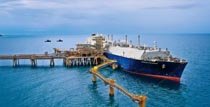 For several years, at least since Donald Trump became president more than two years ago, the U.S. has insisted that American sourced liquefied natural gas (LNG) is the answer for Europe’s gas diversification needs,
For several years, at least since Donald Trump became president more than two years ago, the U.S. has insisted that American sourced liquefied natural gas (LNG) is the answer for Europe’s gas diversification needs,
read more
particularly a long-needed pivot away from geopolitically charged Russian pipeline gas. Moreover, U.S. claims that its LNG is the answer for European gas and energy security needs have caused rifts in EU-US relations, particularly relations between longtime allies Washington and Berlin. In a televised meeting with reporters and NATO Secretary-General Jens Stoltenberg before a NATO summit in Brussels last year, Trump said, referring to the controversial Nordstream 2 gas pipeline project, that it was “very inappropriate” that the U.S. was paying for European defense against Russia while Germany, the biggest European economy, was supporting gas deals with Moscow. Since that time Berlin has been the first to blink as it promised to develop more LNG infrastructure and procure not only more U.S. but Qatari and other producers’ gas. However, the country is still pushing through with the Nordstream 2 project. The Russian-led $11 billion gas pipeline will stretch some 759 miles (1,222 km), running on the bed of the Baltic Sea from Russian gas fields to Germany, bypassing existing land routes over Ukraine, Poland and Belarus. It would double the existing Nordstream pipeline’s current annual capacity of 55 bcm and is expected to become operational by the end of next year. Now, the U.S. energy patch may have another hurdle to overcome, which also intersects the largest LNG market in the world – the Asia Pacific region which accounts for 72 percent of global LNG demand. On Wednesday at an LNG conference in Moscow, Shell’s Senior Deal Lead Stuart Bradford said Russian LNG is well positioned to compete with North American projects to reach new markets in Asia and the Atlantic Basin despite challenges. He added that Russian LNG can offer several location options – the planned capacity expansion at the Sakhalin plant, the Arctic with Yamal LNG and Arctic LNG 2 projects led by Russian Novatek, and the Baltic coast, with the Baltic LNG project. However, he also said that North American projects benefit from lower capital expenditures, from so-called “special relationships” as well as being supported by lower tax regimes, than their Russian project counterparts. Bradford added that the commercial arrangements in North America are implemented on “basis risks,” with gas prices based on the well-established Henry Hub, adding that competition is healthy. Shell is also forecasting that LNG sales will spike this year. Last month, the Anglo-Dutch oil major forecast that global LNG trade will rise 11% to 354 MMT this year as new facilities in Australia, the U.S., Russia and elsewhere increase supplies to Europe and Asia. More countries are also building LNG import or receiving terminals. Shell said that LNG trade rose by 27 MMT last year, with Chinese demand growth accounting for 16 MMT of those volumes. However, some of this demand growth will not only come from China, but India, Pakistan, Bangladesh, Thailand, and in time the Philippines, and Vietnam. The Philippines and Vietnam, however, have yet to construct their first LNG receiving terminals.
https://oilprice.com/Energy/Natural-Gas/Russia-US-Compete-For-Asian-LNG-Market-Share.html
show less
Polish LNG terminal regasification capacity increase cleared by the EU
Poland can move ahead with plans to support the increase of the regasification capacity from 5 to 7.5 billion cubic metres per year, as well the development of additional functionalities, of the LNG terminal in Świnoujście,
read more
following the approval of the European Commission on 18 March. The Commission approved the aid for the construction of this LNG terminal in 2011. The increase in capacity was included in the list of Projects of Common Interest of the European Union as part of the Baltic Energy Market Interconnection Plan (BEMIP) corridor. The Polish LNG will receive PLN 553 million (€128 million) from the European Regional Development Fund and the Cohesion Fund, under the 2014-20 Infrastructure and Environment Operational Programme, which has among its priorities the improvement of energy security. The Commission said the EC assessed the measure under EU State aid rules, in particular, the Commission 2014 Guidelines on State aid for environmental protection and energy and found that it is in line with the requirements of the Guidelines.
In particular, the Commission said, the project will contribute to ensuring the security of gas supplies in Poland and in the Baltic countries by making supplies more diverse and promoting new gas transport routes in the region.
Source: LNG Global
show less
Shell decision on second phase of LNG Canada by 2025
Royal Dutch Shell and its partners building a massive LNG export terminal in Western Canada will decide by 2025 whether to double its capacity, the head of the project said. The $31 billion LNG Canada project
read more
last October became the first major project in five years to be approved, with first exports of the super-chilled fuel planned for 2025. The second phase of the project will include two new processing lines known as trains that will double the plant’s capacity to 28 MMTPA of LNG. Andy Calitz, LNG Canada chief executive officer, said a final investment decision (FID) on phase 2 will happen before the plant’s initial production starts. “We want to take FID on phase 2 before LNG flows from phase 1. (The partners) want to have some insight overall on the project before FID,” Calitz told Reuters in an interview at the CERAWeek conference by IHS Markit. Since LNG Canada was approved, LNG projects were approved in the US Gulf Coast and off the coast of Mauritania and Senegal as producers expect a sharp rise in gas demand, particularly in Asia. Shell’s partners are Malaysia’s Petroliam Nasional (Petronas), PetroChina, Korea Gas Corporation (KOGAS) and Japan’s Mitsubishi Corporation. Meanwhile, LNG producers must avoid becoming over-reliant on the strong Chinese demand growth seen in the past two years and should intensify efforts to broaden their markets and create new uses for the fuel, senior company executives said at an energy conference this week. The warnings were underscored by this year’s drop in Asian spot prices for the super-cooled gas. LNG prices this week fell to their lowest for this time of the year since 2016, weighed down by rich supplies.
https://gulftoday.ae/business/2019/03/17/shell-decision-on-lng-canda-by-2025
show less
LNG sector dangerously dependent on Chinese demand
The liquefied natural gas industry has become too reliant on demand for the fuel from China, industry executives warned at last week’s CERAWeek, advising players in the LNG field to try and broaden their markets
read more
before they begin suffering the impact of this overreliance. Reuters quotes several energy industry executives as reminding their peers demand for LNG in China this year will be slower than previously expected and lower than the last two years. Also, they said the demand producers have seen come from China during these last two years does not necessarily have to be indicative of future demand. The core of the message is simple: Take it easy. “We are becoming too reliant on China in the last couple of years,” the chief executive of Australia’s Woodside Petroleum said. “It worries me because we’ve seen others drop off in the same period for demand.” “I would caution the LNG industry not to make linear extrapolations of Chinese LNG demand based on what you’ve seen in the last two years,” the chairman of Japan’s JERA, Hendrik Gordenker, said. Indeed, LNG players need to be cautious and use the bad example of all other commodities whose prices swing wildly on a whiff of trouble in Chinese demand and have done so since China began emerging as the new world economic powerhouse. But what can LNG producers do to avoid fallout in the shape of depressed prices and, ultimately, losses? For one thing, they can and should watch the trends. Shell’s latest LNG Outlook forecast LNG demand will grow steadily in the long term and the market might swing into a deficit if more production capacity does not come online. However, that’s the long run. In the next 12 months, demand for the fuel will only rise by 16 MMT versus a jump in supply of 33 MMT, according to Poten & Partners, an energy consultancy specializing in LNG. Spot prices are low, and what’s worse, Asian buyers are less willing to commit to long-term supply deals, a recent analysis from S&P Global Platts said. These long-term supply commitments are vital for the commercial viability of planned but not yet built LNG facilities, but also for the profitability of already built ones. There has been talk that Cheniere could get ahead by striking a long-term supply deal with Sinopec but that’s contingent on a trade deal between Washington and Beijing. The way to beat this slowdown is to seek new markets, on the one hand, and wage war on coal to stimulate more LNG demand, according to the energy executives attending CERAWeek. The latter is a relatively straightforward deal and fits in with a drive towards cleaner fuels altogether. The former might be tricky, however. The most logical alternative to China is India, another powerhouse. Yet, infrastructure constraints there are making LNG demand growth slower than it could have been. In this situation, producers who already have long-term supply deals are once again better placed to weather the temporary slowdown in demand than the newer kids on the block who have yet to secure long-term buyers of their LNG.
https://oilprice.com/Energy/Natural-Gas/LNG-Sector-Dangerously-Dependent-On-Chinese-Demand.html
show less
Sri Lanka to discuss on Draft National Policy on LNG
The Ministry of Highways & Road Development together with Petroleum Resources Development has developed the draft national policy on natural gas with a view to establish and develop the natural gas industry in Sri Lanka. With the view of further improvement and development of the policy,
read more
Public Utilities Commission of Sri Lanka together along with The Ministry of Highways & Road Development and Petroleum Resources Development Secretariat has decided to call public and expert comments on the draft national policy on Liquid Natural Gas. Exploratory evidence on natural gas deposits in Mannar Basin and the pursuit of relatively clean alternative fuels for enhancing the diversity of power generation energy mix have heightened the interest in natural gas in the country. First Natural Gas discovery in Sri Lanka was made in the Mannar Basin, off North Western coast in 2011. So far, exploratory drilling has made two discoveries from the same block with estimated reservoir capacities in excess of 1 Trillion Cubic Feet (TCF) of natural gas and 10 million BBL(barrels) of condensate. The draft policy explained despite positive prospects, however, Sri Lanka has no experience in natural gas in any economic sector so far and there is substantial evidence to indicate that Sri Lanka can reap significant economic, social, and environmental benefits from using natural gas as a source of energy in power, industrial, transportation, household and commercial sectors and a raw material for industrial purposes. The national policy on natural gas will facilitate the exploration and production of natural gas, importation and exportation of Liquefied Natural Gas and utilization of natural gas as an energy source and raw material; and to establish the legal, regulatory and institutional framework for the natural gas industry in Sri Lanka.
https://colombogazette.com/2019/03/22/sri-lanka-to-discuss-on-draft-national-policy-on-lng/
show less
Tanzania holds talks on LNG
Tanzania has said it plans to conclude talks in September with a group of foreign oil and gas companies led by Norway’s Equinor on developing a liquefied natural gas (LNG) project in the East African country.
read more
Construction of an LNG export terminal near huge offshore natural gas discoveries in deepwater south of the country has been held up for years by regulatory delays. “The government has officially decided to begin talks in early April for construction of the LNG project,” Reuters quoted Tanzania’s energy ministry to have said in a statement. “We are keen to implement this key project for the economy and we plan to … conclude the talks in September this year,” the ministry said. The country’s central bank believes just starting work on the plant would add another two percentage points to annual economic growth of around seven per cent. The talks are aimed at negotiating a host government agreement, which is seen as a crucial step towards reaching a final investment decision for the long-delayed project.
https://www.thisdaylive.com/index.php/2019/03/26/tanzania-holds-talks-on-lng/
show less
Brazil’s Petrobras fines Bolivia for failing to meet LNG deliveries
Marcelo Cruz, the executive manager of gas and energy at Petroleo Brasileiro SA, declined to reveal the value of the fine, citing confidentiality, but confirmed that it was a “relevant” amount. Rio De Janeiro:
read more
Brazilian state-run oil company Petrobras has fined Bolivia’s state oil company YPFB after it failed to deliver liquefied natural gas (LNG) volumes secured under a contract through the Bolivia-Brazil pipeline during 2018, a Petrobras executive said. Cruz, who spoke to Reuters by phone, said the fine, paid last week, was aimed at offsetting possible losses for Petrobras, which ends up having to compensate the volumes from other sources. “At the moment it does not deliver the gas, I end up having to go to the market and buy LNG. On average, LNG is more expensive than Bolivian gas,” Cruz said. “The spirit of the fine is this: to compensate for any losses that may occur.” Cruz said YPFB had not been able to deliver the volumes Petrobras needed due to a reduction of exploratory investments in recent years, which had led to a drop in production. Bolivia’s domestic needs had also grown, constricting supply, he said. Last year, Petrobras demanded an average of 26 million cubic meters per day of natural gas, while YPFB delivered 22.6 million, according to official figures. Due to Bolivia’s difficulties, Cruz said companies are negotiating a possible revision of the volume of gas contracted.
show less
SNAPSHOT: INTERNATIONAL
 Natural Gas / LNG Utilization
Natural Gas / LNG Utilization
Snam and Tamoil will open five new natural gas stations in Italy
Tamoil and Snam, through its subsidiary Snam4Mobility, signed a contract to build a first batch of five natural gas filling stations in Italy, promoting the development of sustainable mobility for cars and trucks throughout the country.
read more
The agreement will see Tamoil and Snam4Mobility collaborate on the design, construction, maintenance and operation of four new CNG refueling facilities and one new L-CNG site within Tamoil’s national distributor network. The contract is part of Snam4Mobility’s initiative to boost the growth of the CNG and LNG refueling infrastructure in Italy, through direct investment and agreements with other operators in the sector. Italy is the European leader in NGV mobility, with about 1 million vehicles on the road and over 1,300 service stations, which will increase as a result of Snam’s investments. The company is also investing in the development of biomethane as vehicle fuel. Moreover, Tamoil’s offer of products and services for its customers will be strengthened as a result, increasing the number of owned sales points that supply natural gas and further reaffirming its commitment to satisfying Italy’s demand for mobility in all its forms.
show less
SEAT adds 173 CNG models to its car-sharing fleet
 In February 2018, SEAT fully acquired Madrid car-sharing company Respiro with the intention of becoming a benchmark mobility solutions provider. Included in SEAT planning was the gradual replacement of existing rent-by-the-hour vehicle stock with SEAT models powered by
In February 2018, SEAT fully acquired Madrid car-sharing company Respiro with the intention of becoming a benchmark mobility solutions provider. Included in SEAT planning was the gradual replacement of existing rent-by-the-hour vehicle stock with SEAT models powered by
read more
Compressed Natural Gas. That day has arrived. SEAT has integrated 173 compressed natural gas (CNG) cars into the fleet, which will be able to freely access the Madrid Central area thanks to its ECO label, reports Diariomotor. Madrid Central is a zone of restrictions in the center of Madrid in which it is sought to reduce by 40% the limits of the concentration of polluting emissions due to traffic. With this objective, the new regulation limits access exclusively to vehicles with the ECO or ZERO environmental sticker, regardless of whether it is a private vehicle, carsharing or any other type of rental. Seat is able to draw from an increasingly diverse range of bi-fuel natural gas powered vehicles, not only from its own list of models but also from Volkswagen’s commercial range. These recent models are all capable of performance equivalent to conventionally fueled vehicles while delivering improved economy and reduced vehicle emissions.
https://www.ngvglobal.com/blog/seat-adds-173-cng-model-to-its-car-sharing-fleet-0322
show less
Hyundai delivered 100 CNG buses during AltFuels Mexico 2019
AltFuels Mexico 2019 took place last week, on 11-14 March at the WTC in Mexico City, and several announcements related to the natural gas and sustainable mobility industries were made under its framework, including the delivery of 100 Hyundai natural gas vehicles to the Mexican transportation and logistics company Traxión.
read more
Traxión announced the investment of 350 million pesos (more than 18 million dollars) for the acquisition of 100 Hyundai Super Aero City CNG buses, which will help it transport over 9,200 workers daily. The acquisition of these 100 NGVs will also allow the company to strengthen its presence in the Pacific area, where it will add a total of 500 vehicles. With the new natural gas vehicles, Traxión operations will reduce emissions: 87% of CO and NMHC, 41% of NOx, and 85% of CH4, without forgetting that exhaust emissions and noise pollution will be reduced to 100%. The director of the passenger transport division of Traxión Elías Dana received from the CEO of Hyundai Mexico Gino Saer a symbolic key representing the delivery of the vehicles, which are equipped with anti-collision systems, advanced geolocation and artificial intelligence. “For Traxión, it has always been very important to remain an avant-garde company in all senses, which is why we are constantly exploring environmentally friendly technologies; thus, on this occasion we make one of the most important investments of the year to provide passenger transport service to the Hyundai plants located in Tijuana and Rosarito, through the use of natural gas buses,” explained Dana.
show less
Iveco Argentina introduces first natural gas vehicles in the country
During a new edition of Expoagro in San Nicolás, province of Buenos Aires, IVECO launched the Natural Power (NP) range, the first natural gas vehicles in Argentina.
read more
The latest generation of the NP line-up features the highest technology and design, equivalent to its diesel counterpart, with a benefit of a 30% reduction in fuel costs compared to diesel. After introducing to the local market the Daily Hi-Matic (the first utility vehicle with eight-speed automatic transmission) in 2017, this year advances with the incorporation into the market of the Daily Blue Power and the Stralis powered by CNG. IVECO also presented the advance of CNG Tector 160E21 that will begin manufacturing in Argentina in the last quarter of the year. The vehicle, designed to operate with CNG technology, offers an engine with longer useful life, adding great elasticity of operation with accelerations without irregularities or detonations. The oil that lubricates the powertrain is less contaminated, which increases the intervals between oil changes. In addition, it does not form sediments by keeping the spark plugs clean, it does not wash the walls of the engine cylinders and allows a better and effective lubrication, which translates into a lower maintenance cost. “After the milestone that marked the introduction of the Daily Hi-Matic, we are once again innovating in the NP range, now with the incorporation of CNG technology, and our vision is to continue on the path to offer, in the not too distant future, the complete line of our vehicles powered by clean energy,” commented Francisco Spasaro, Marketing Manager of IVECO Argentina.
show less
Portuguese logistics companies add LNG trucks under ECO-GATE action
The Portuguese logistics and distribution transport companies HAVI, Santos e Vale and Transportes Paulo Costa & Ferreira have acquired IVECO and Scania Group LNG trucks within the framework of the ECO-GATE action,
read more
which is co-financed by the European Union’s Connecting Europe Facility (CEF program). These companies will contribute to the ECO-GATE action by making use of some of the innovative and advanced L-CNG stations placed through the Atlantic and Mediterranean Road Core Network Corridors of Portugal and Spain. This will ensure the use of these refueling facilities and, hence, secure the collection and analysis of meaningful operational data for the L-CNG refueling operators to feed in the ECO-GATE study. Moreover, the trial operation and monitoring of the advanced and conventional natural gas vehicles has been recently launched. Transport companies will test and monitor the LNG heavy duty vehicles to analyze technology performance, vehicle emissions and fuel economy over several routes, involving mainly the road core network corridor. The EU keeps promoting the transition of logistics fleets to natural gas and other alternative energies in the Iberian Peninsula.
show less
Korea to cut import surcharge on LNG for power generation
South Korea’s industry ministry said it will sharply reduce the import surcharge imposed on liquefied natural gas (LNG) in line with the government’s efforts to control fine dust pollution.
read more
The Ministry of Trade, Industry and Energy said the new rules will cut the levy on the more environment-friendly fuel used for power generation by 84 percent at 3.8 won (US$0.003) per kilogram from the previous 24.2 won. The lowering of the duties will go into effect starting in April. The ministry said the decision came as the existing surcharge on natural gas was excessively high considering the environmental benefits and ability to lower the country’s dependence on coal. A kilogram of LNG comes with an environmental cost caused through the emission of fine dust at 42.6 won, which is only half of the 84.8 won caused by coal for the same volume, the ministry said. As for soft coal used for power generation, the ministry said it will increase their special consumption tax to 46 won per kilogram from the current 36 won. The special consumption tax on LNG, in contrast, will be reduced to 12 won for the volume from the current 60 won. The ministry said it will continue to roll out various efforts to cut the emission of fine dust in the country, which has recently emerged as a major threat for public health in South Korea. Over the upcoming spring, the ministry said it will also partially suspend the operation of 48 coal power plants from at least a week to 45 days over the March-June period, and fully shut down six plants over the period.
https://www.hellenicshippingnews.com/s-korea-to-cut-import-surcharge-on-lng-for-power-generation/
show less
Argentina updates regulations to promote natural gas mobility
Argentina’s National Regulatory Entity of Natural Gas (Enargas) is developing new safety regulations and modernizing the monitoring and control mechanisms to promote the expansion of LNG consumption for heavy transport and CNG in public transport buses, SUVs and light-duty vehicles in general.
read more
For the industry actors, this transformation process is an opportunity to generate demand for the incremental production of Vaca Muerta gas. In addition, the new regulations will create a greater added value in the manufacture of NGV-related products. It seeks to promote the development and production of compressors, cylinders, valves, dispensers and other resources for the use of CNG, as well as transport, dispensers and other components associated with the adoption of LNG, which Enargas presented as “an opportunity to develop and modernize the sector.” In that sense, Enargas’ NGV Administration explained that they are working on “the development of regulations that give security to the circulation of public transport buses powered by CNG,” which is considered “a necessity in the current energy landscape and a comparative advantage that Argentina has,” they commented to the national news agency Télam. Enargas also assured that the extension of this type of fuel to the entire passenger transport fleet will bring a decrease in the environmental impact, a noticeable reduction in the emissions of noise, toxic gases, greenhouse effect and particulate matter, thus improving the quality of life of the population.
show less
Mexico: Ciudad Juárez introduces 400 CNG-powered patrol cars
As part of the actions implemented by the 2018-2021 Municipal Government to safeguard the integrity of the people of Juarez, the delivery of 400 patrol cars running on natural gas for the Public Security Secretariat (SSPM) took place in March, in an event held at the Plaza de la Mexicanidad.
read more
The Municipal President Armando Cabada Alvídrez led the delivery ceremony of the vehicles that were previously tendered for lease: 300 arrived in the city at the end of February and the other 100 in the first days of March. He explained that they opted for a 36-month lease system, which will generate savings of 40 million pesos, in addition to the savings of 15 million pesos in fuel costs, because the cars operate with CNG. “Our commitment to security is unavoidable and is more consolidated now than ever, we must not wait for things to happen, we must make things happen,” said the mayor. Since their arrival, the vehicles are already in operation, offering services of vigilance and prevention tasks. Cabada Alvídrez announced that from 2016 to date, 783 patrol cars have been acquired, both for the SSPM and for the General Direction of Transport, with a total investment of 687 million pesos at the end of the lease.
show less
SNAPSHOT: INTERNATIONAL
 LNG as a Marine Fuel / Shipping
LNG as a Marine Fuel / Shipping
Refiners invest $1 billion to meet shift to cleaner marine fuel – BP
 Refiners around the world have invested about $1 billion so far to produce low-sulphur marine fuel to meet new regulations coming into force in 2020, a BP executive said. International Maritime Organization (IMO) rules will ban ships from using fuels
Refiners around the world have invested about $1 billion so far to produce low-sulphur marine fuel to meet new regulations coming into force in 2020, a BP executive said. International Maritime Organization (IMO) rules will ban ships from using fuels
read more
with a sulphur content above 0.5% from 2020, compared with 3.5% now, unless they are equipped with so-called scrubbers to clean up sulphur emissions. Since the deadline for the shift was set in 2016, shippers and refiners have scrambled to prepare for the new standards. “There’s certainly strong supply of compliant fuel oil, particularly in hub locations (like) Rotterdam, Singapore and Fujairah,” BP’s global head of marine fuels, Eddie Gauci, told the Fujairah Bunkering and Fuel Oil Forum. There’s been a huge amount of investment in refineries since 2015 and (it) will continue beyond 2020,” Gauci told the gathering in the United Arab Emirates, saying investment to deal with the shift had reached an estimated $1 billion. BP said in March it was set to sell its new very low sulphur fuel oil (VLSFO) globally, echoing announcements by oil majors such as Royal Dutch Shell and Exxon Mobil. In smaller ports lacking adequate fuel storage to hold the range of fuel grades needed, suppliers of compliant marine fuels could turn to floating storage, as land facilities adapt to the shift. “We will see some floating storage of high sulphur or low sulphur for a period of time until the land-based infrastructure establishes some kind of equilibrium that’s in tune with what grades of fuel are called for in particular locations,” he said.
show less
Anadarko to seek to charter 16 tankers for Mozambique LNG project
Anadarko said on Thursday it would seek long-term charters for around 16 liquefied natural gas (LNG) tankers it would need to ship gas from a proposed project in Mozambique.
read more
The independent U.S. energy producer aims to take a final investment decision on the $20 billion project in the coming months, having signed up long-term buyers for its LNG. Anadarko said all the contracts signed so far, for over 9.5 MMTPA out of a capacity of 12.88 MMTPA, were on a delivered ex-ship (DES) basis. The company could have sold the LNG on a free on board (FOB) basis, as do many U.S. LNG projects, which leaves the buyers to organise the shipping. “The project needs approximately 16 LNG vessels to service the DES contracts,” Helen Rhymes, an Anadarko spokeswoman, told Reuters. “While the specifics of the tendering process are confidential, the project plans to enter into long-term time charters with selected ship owners rather than own the vessels. An invitation to tender will be issued sometime after FID (final investment decision).” Anadarko will start work on the construction of the onshore terminal once it takes the final investment decision. Already several thousand workers are onsite clearing the ground for the facilities. Anadarko has LNG supply deals with Japanese utilities Tokyo Gas and Tohoku Electric, European utilities Centrica and EDF, India’s Bharat Petroleum , China’s CNOOC, Indonesia’s Pertamina and Royal Dutch Shell.
show less
Dutch shipping company acquires LNG carrier newbuild
Dutch gas tanker owner Anthony Veder will expand its fleet with a new LNG carrier under construction in China at Zhejiang Xinle Shipbuilding in Ningbo. The LNG carrier, with a capacity of 30,000 m3, will be ready for worldwide trading mid-year. As with other Anthony Veder gas carriers, the new ship will incorporate ‘Coral’ as part of its name and be under the company’s commercial operation and ship management. “We are proud to add a new LNG carrier to our fleet in this relatively short timeframe and look forward to our close co-operation with Xinle Shipbuilding to finalise the vessel,” said Anthony Veder chief executive Jan Valkier. “Our company has a long history in building and delivering ships in China such as the LNG-fuelled liquid ethylene gas vessels Coral Star and Coral Sticho. We are excited to return to China for this latest addition to our fleet after five years’ absence.” Coral Star and Coral Sticho were both built in 2014, each with a capacity of 4,768 m3. They are two of eight vessels in the Rotterdam-based shipping company’s fleet that burn LNG as fuel. With the recent acquisition of the newbuild, Anthony Veder’s fleet will grow to 31 gas carriers, most of which are semi-pressurised/ fully refrigerated gas tankers and ethylene carriers. Other vessel types in the fleet consist of combined and dedicated LNG carriers. It also operates a fully pressurised tanker and a dedicated fully pressurised/fully refrigerated CO2 carrier.
Shipping companies invests on gas carriers due to growing LNG demand
Shipping operators are expecting a steady profit as the demand for natural gas grows in the Asian market. Because of the high demand of the LNG in Asia’s transportation and industries, the demand for LNG carrier ships is also expected to increase soon as a raft of United States natural gas projects starts to operate these coming years.
read more
It is expected that the new gas projects will boost the number of global fleet tankers of seagoing liquid natural gas tankers by as much as a third as shipping operators encounter sharp swings in the oil markets. The estimated cost of a vessel that can transport LNG is about $175 million each which is several times costlier than other ship types. However, shipping operators believe that the vehicles could be the most profitable trade in shipping since the 1960s when the transport of crude oil was the most successful maritime business. In years, the LNG transport business is just a small fraction of the operations of the global tanker market. However, the rapid increase in demand for natural gas as the world looks for alternatives for cleaner sources of power to replace the use of oil and coal promises better profit. The output for natural gas in the United States increased because of the improved hydraulic fracturing technology which made drilling for shale oil and gas more cost-effective. George Prokopiou, a shipowner and the chairman of Dynagas LNG Partners LP, said that they are moving into an era where fossil fuels will be reduced in the energy mix, and LNG will be used extensively in the transitional period where more clean forms of energy can be developed. He added that the shipment of LNG can’t be ignored when you are in the shipping business. Dynagas owns five icebreaking LNG carriers that have long term contracts to transport gas from the Yamal project in the Russian Arctic. Mr. Prokopiou operates more not less than 100 ships that include crude oil supertankers and dry bulk carriers owned by different companies. The biggest shipowners in the world said that they are willing to spend billions more in the coming years on LNG carriers to meet the increasing demand of the Asian market. The demand for LNG is driven by Japan, China, India, and Southeast Asia.
show less
Dutch shipping company acquires LNG carrier newbuild
Dutch gas tanker owner Anthony Veder will expand its fleet with a new LNG carrier under construction in China at Zhejiang Xinle Shipbuilding in Ningbo. The LNG carrier, with a capacity of 30,000 m3, will be ready for worldwide trading mid-year.
read more
As with other Anthony Veder gas carriers, the new ship will incorporate ‘Coral’ as part of its name and be under the company’s commercial operation and ship management. “We are proud to add a new LNG carrier to our fleet in this relatively short timeframe and look forward to our close co-operation with Xinle Shipbuilding to finalise the vessel,” said Anthony Veder chief executive Jan Valkier. “Our company has a long history in building and delivering ships in China such as the LNG-fuelled liquid ethylene gas vessels Coral Star and Coral Sticho. We are excited to return to China for this latest addition to our fleet after five years’ absence.” Coral Star and Coral Sticho were both built in 2014, each with a capacity of 4,768 m3. They are two of eight vessels in the Rotterdam-based shipping company’s fleet that burn LNG as fuel. With the recent acquisition of the newbuild, Anthony Veder’s fleet will grow to 31 gas carriers, most of which are semi-pressurised/ fully refrigerated gas tankers and ethylene carriers. Other vessel types in the fleet consist of combined and dedicated LNG carriers. It also operates a fully pressurised tanker and a dedicated fully pressurised/fully refrigerated CO2 carrier.
show less
Shipping companies invests on gas carriers due to growing LNG demand
Shipping operators are expecting a steady profit as the demand for natural gas grows in the Asian market. Because of the high demand of the LNG in Asia’s transportation and industries, the demand for LNG carrier ships is also expected to increase soon as a raft of United States natural gas projects starts to operate these coming years.
read more
It is expected that the new gas projects will boost the number of global fleet tankers of seagoing liquid natural gas tankers by as much as a third as shipping operators encounter sharp swings in the oil markets. The estimated cost of a vessel that can transport LNG is about $175 million each which is several times costlier than other ship types. However, shipping operators believe that the vehicles could be the most profitable trade in shipping since the 1960s when the transport of crude oil was the most successful maritime business. In years, the LNG transport business is just a small fraction of the operations of the global tanker market. However, the rapid increase in demand for natural gas as the world looks for alternatives for cleaner sources of power to replace the use of oil and coal promises better profit. The output for natural gas in the United States increased because of the improved hydraulic fracturing technology which made drilling for shale oil and gas more cost-effective. George Prokopiou, a shipowner and the chairman of Dynagas LNG Partners LP, said that they are moving into an era where fossil fuels will be reduced in the energy mix, and LNG will be used extensively in the transitional period where more clean forms of energy can be developed. He added that the shipment of LNG can’t be ignored when you are in the shipping business. Dynagas owns five icebreaking LNG carriers that have long term contracts to transport gas from the Yamal project in the Russian Arctic. Mr. Prokopiou operates more not less than 100 ships that include crude oil supertankers and dry bulk carriers owned by different companies. The biggest shipowners in the world said that they are willing to spend billions more in the coming years on LNG carriers to meet the increasing demand of the Asian market. The demand for LNG is driven by Japan, China, India, and Southeast Asia.
show less
Japan’s Inpex eyes LNG bunkering joint venture with Adnoc
Japan’s Inpex will look to finalise a joint venture with Abu Dhabi National Oil Company on liquefied natural gas in the UAE and Southeast Asia “as quickly as possible”, after picking up an onshore block for Dh646m in Abu Dhabi.
read more
“We had already signed an MoU with Adnoc about LNG bunkering, so I think there might be a lot of potential. We would like to quickly establish a joint venture with Adnoc in this area, so we can get enough demand,” Inpex president and chief executive Takayuki Ueda told The National in an interview in Abu Dhabi. Equal partnership seems to be desirable,” he added when asked about the terms of a possible partnership. Japan’s Inpex is a long-term investor in Abu Dhabi’s hydrocarbons industry, which accounts for 4.2% of the world’s crude production. The firm, which first began partnering with the national oil company in the early seventies, signed a preliminary agreement with Adnoc last year to use LNG as a bunkering fuel. With the 2020 onset of regulations for low-sulphur fuel as set by the United Nations’ International Maritime Organisation, the use of sulphur-free LNG as a fuel on non-LNG ships is expected to see an uptake. The Japanese firm saw opportunities for greater expansion in the LNG bunkering business in Abu Dhabi and the region, said Mr Ueda. Inpex, which has a mid-term capital expenditure plan of around $1.2 billion from 2018 to 2022, will look to ramp up investment this year if the price of Brent remained at more than $60 per barrel, he added. The energy firm will look to bid in future licensing rounds in Abu Dhabi and is also interested in developing the emirate’s unconventional gas resources – a sector in which the firm has begun investing recently in the US.
show less
SNAPSHOT: INTERNATIONAL
 Technological Development for Cleaner and Greener Environment Hydrogen & Bio-Methane
Technological Development for Cleaner and Greener Environment Hydrogen & Bio-Methane
Cedigaz reports on global biomethane market
Cedigaz, an international not for profit association dedicated to natural gas information, has declared the biomethane sector is booming worldwide. There will soon be more than 1,000 biomethane production plants operating in thirty-four countries, up from 720 at year-end 2017.
read more
Long centered in Europe, the green gas sector is indisputably going global. Since 2010, world biomethane production has increased exponentially, reaching three billion cubic meters in 2017. In Europe, biomethane use is spreading across the continent. There are now nineteen European producing countries, whose output totalled nearly 2 bcm in 2017. The United States is now world leader for the use of biomethane as vehicle fuel, further to its production surge of 2014-2017 and driven by federal and state regulations. The fact that China and India have recently adopted biogas upgrading technology promises to be a game changer. Both countries have set ambitious biomethane production targets and figure as huge emerging markets. In Central and South America, Brazil is taking regulatory steps to exploit its huge potential. Despite a flurry of projects and rising interest among governments and industry players worldwide, data on this sector are comparatively scarce and sources of information – national, regional or sectoral – are highly dispersed. To fill this void, Cedigaz is launching a new report and database focused on global biomethane markets and production plants.
https://www.ngvglobal.com/blog/cedigaz-reports-on-global-biomethane-market-0322
show less
Høglund to supply biogas-ready solutions for Hurtigruten Retrofits
 Høglund Marine Solutions of Sem, Norway, has been awarded a contract to deliver biogas-ready fuel gas supply systems (FGSS) for six Hurtigruten passenger ship retrofits.
Høglund Marine Solutions of Sem, Norway, has been awarded a contract to deliver biogas-ready fuel gas supply systems (FGSS) for six Hurtigruten passenger ship retrofits.
read more
Hurtigruten is a Norwegian cruise, ferry and cargo operator which services the country’s western and northern coast between Bergen and Kirkenes. Høglund will work together with HB Hunte Engineering to design and engineer fully customised tank and FGSS solutions for each of the six vessels, optimised to run on both liquified natural gas (LNG) and liquified biogas (LBG). Hurtigruten, a leader in the Arctic and Antarctic expedition cruise segment, will use Høglund and HB Hunte’s bespoke FGSS solutions in tandem with large battery packs onboard its vessels, replacing its older engines which run on marine gas oil. Høglund Gas Solutions, operating out of Hamburg, will provide a completely customised and integrated FGSS solution including process design and related automation. HB Hunte will provide mechanical gas engineering and gas tank design. The unique offering will also include overall project management and 24/7 after-care support from Høglund’s dedicated team of experts. Peter Morsbach, Project Director, Høglund Gas Solutions, said: “We are tremendously excited to be involved in such a forward-looking project, which will undoubtedly set a new benchmark for low-carbon emissions in the rapidly evolving cruise sector.Frerk Brand, Managing Director, HB Hunte, commented: “We created an optimised tank design for the series of six vessels, combining state-of-the-art technology with an innovative shape including proven reliability and safety specifically designed for Hurtigruten’s fleet of ships.”
show less


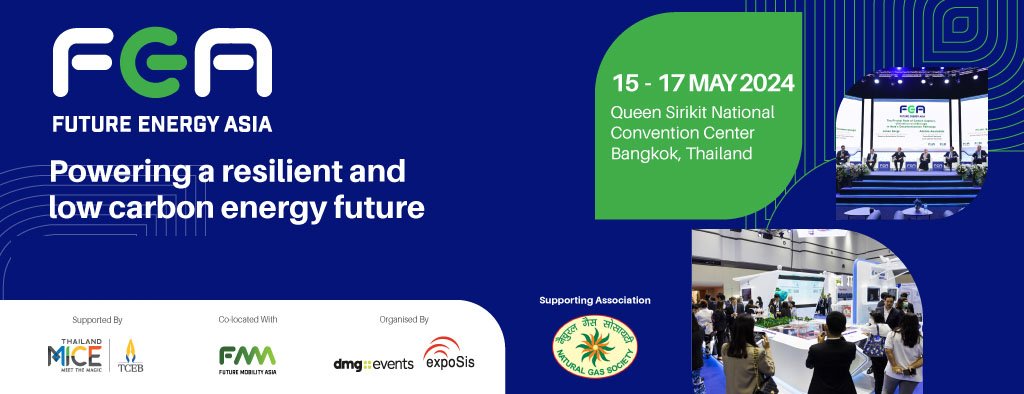





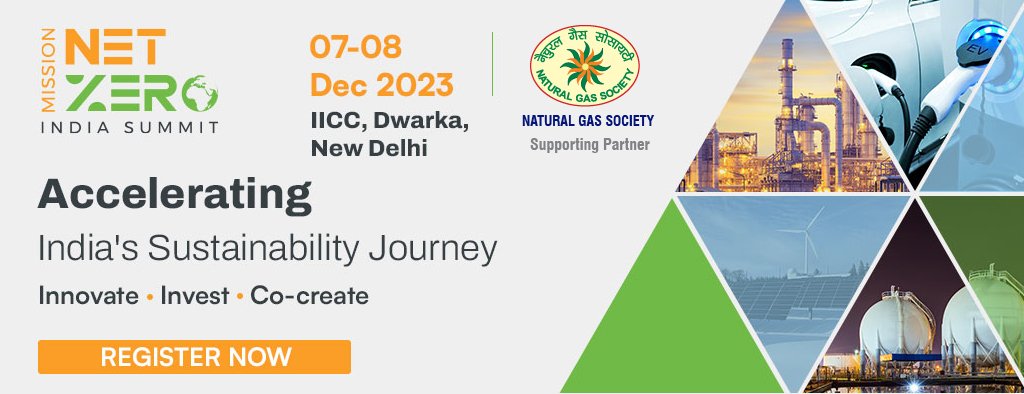
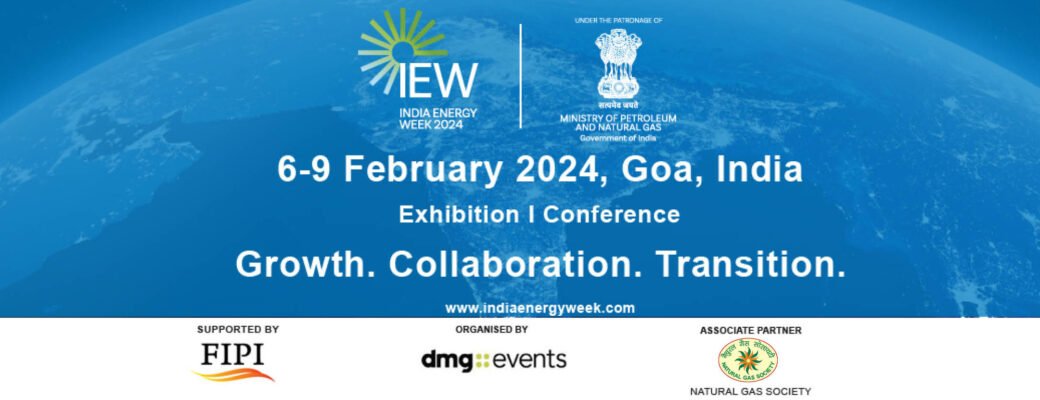

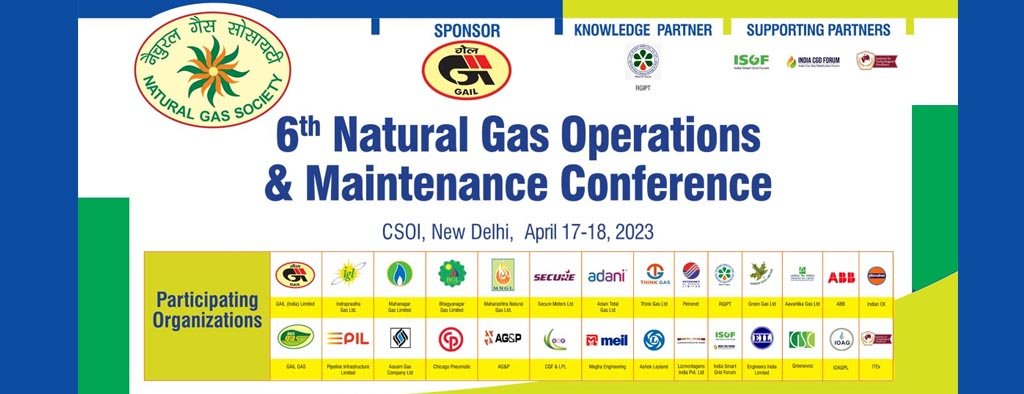

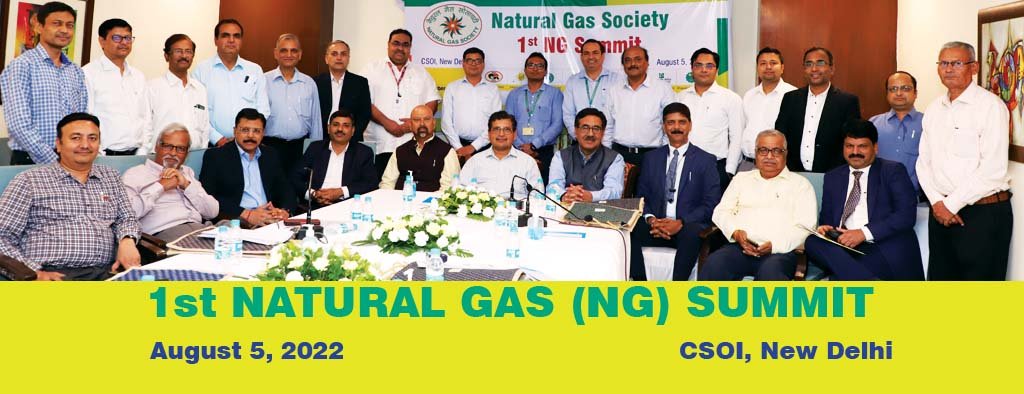
 That will reverse the trend of contraction seen in the first three quarters of financial year 2018-19. A 22-25% decline in the prices of LNG since January this year, and an expected 5 to 7 % rise in consumption of piped natural gas (PNG) and compressed natural gas (CNG) is set to drive up the profit margins of city gas distribution (CGD) firms by 250-300 basis points (bps) in the first half of 2019-20.
That will reverse the trend of contraction seen in the first three quarters of financial year 2018-19. A 22-25% decline in the prices of LNG since January this year, and an expected 5 to 7 % rise in consumption of piped natural gas (PNG) and compressed natural gas (CNG) is set to drive up the profit margins of city gas distribution (CGD) firms by 250-300 basis points (bps) in the first half of 2019-20.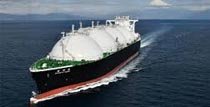 Argentina’s energy secretariat said it authorized oil companies YPF and Total to make new gas exports to neighboring Chile. The exports will take place in an eight-month period of lower local demand in Argentina.
Argentina’s energy secretariat said it authorized oil companies YPF and Total to make new gas exports to neighboring Chile. The exports will take place in an eight-month period of lower local demand in Argentina.